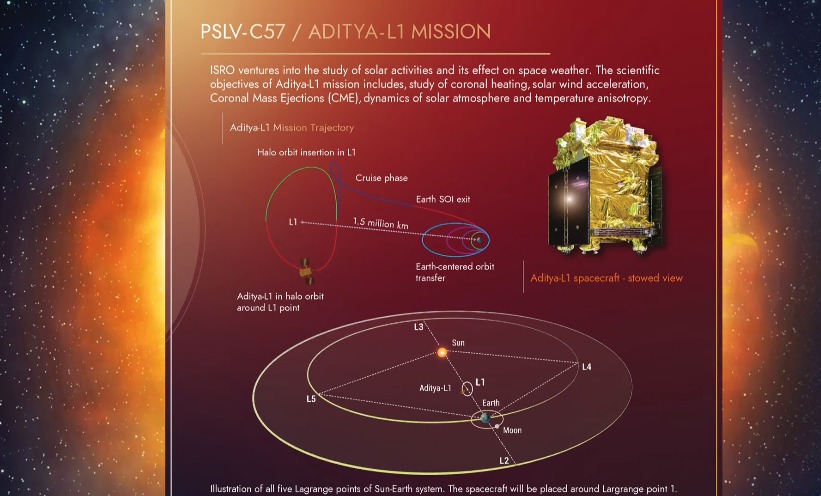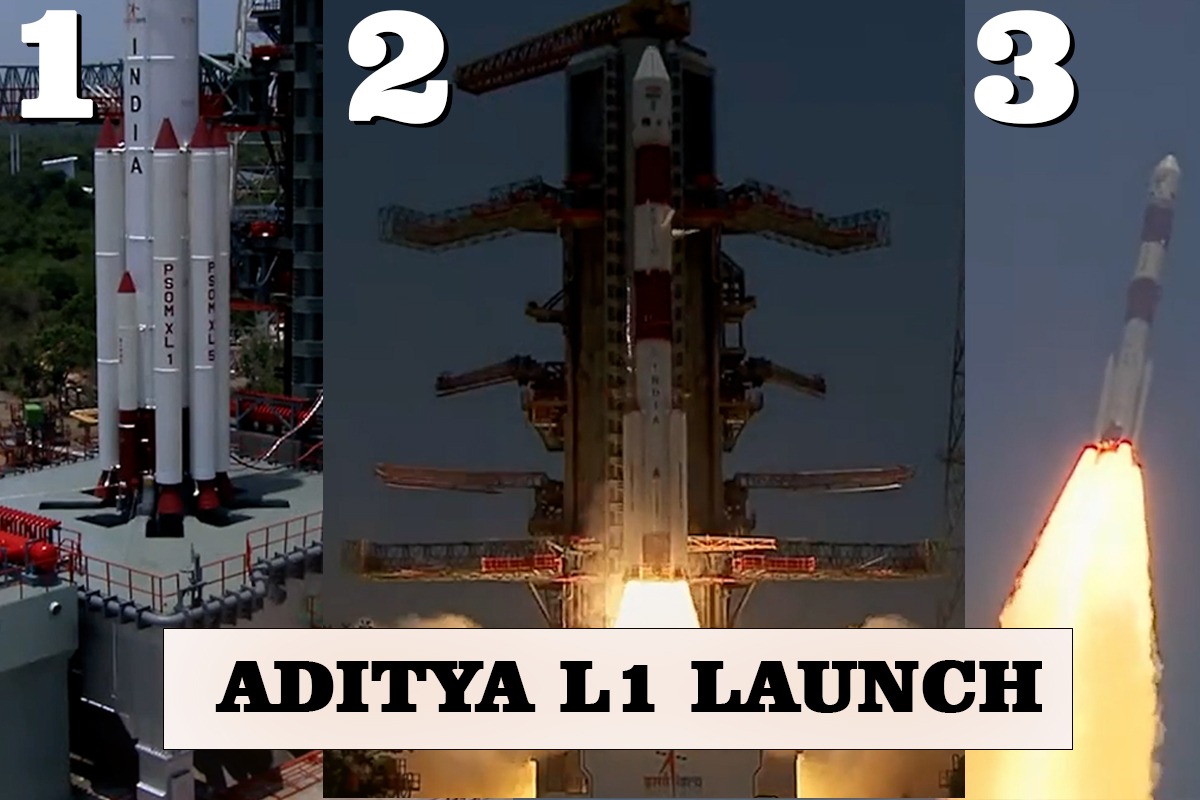NEW DELHI: India launched its first mission to study the Sun onboard Vikas-engine powered PSLV from Sriharikota, Andhra Pradesh on Saturday, 10 days after it successfully sent a mission to the moon.
Indian Space Research Organisation’s (ISRO) Aditya L1 follows similar missions by space agencies of Europe, the United States, Japan, and China.
This mission is set to be an absolute game-changer in the world of studies of ‘Aditya’ — the Sanskrit word for ‘Sun’.
Unlike the Chandrayaan-3 mission where the lander, Vikram, was set to land on the moon, Aditya-L1 is a satellite that will not land on the Sun and instead will be placed at a safe distance.

The satellite is packed with seven indigenously-developed payloads, five of which have been developed by ISRO while the other two have been developed by academic institutes.
The L1 in the name refers to the Lagrange Point where the gravitational points of Earth-Sun remain in equilibrium. The satellite will orbit the Lagrange Point through its entire mission life after completing five maneuvres in the Earth’s orbit for 16 days till it gains the necessary velocity to set out for its journey.
Aditya-L1 will stay approximately 1.5 million km away from Earth, pointed towards the Sun, which is one per cent of the two celestial bodies’ distance.
WATCH: How Ace Scientist Nambi Narayanan Exposed Ill-Treatment For ISRO in Congress Era
#AdityaL1Launch : As the mission to study the Sun launches into space, many celebrities such as @ajaydevgn @RandeepHooda @himantabiswa @Shehzad_Ind @siddaramaiah @ArvindKejriwal congratulated the ISRO team for a successful launch#AdityaMission
READ: https://t.co/dKMBO5nUA0
— The New Indian (@TheNewIndian_in) September 2, 2023
EXCLUSIVE: The New Indian gets all the technical details from a senior technician at Nehru Planetarium on the launch of #AdityaL1 by #ISRO this morning.
Reports @Mohit_Saini22 pic.twitter.com/MdrrL4wRhy
— The New Indian (@TheNewIndian_in) September 2, 2023
WATCH:









